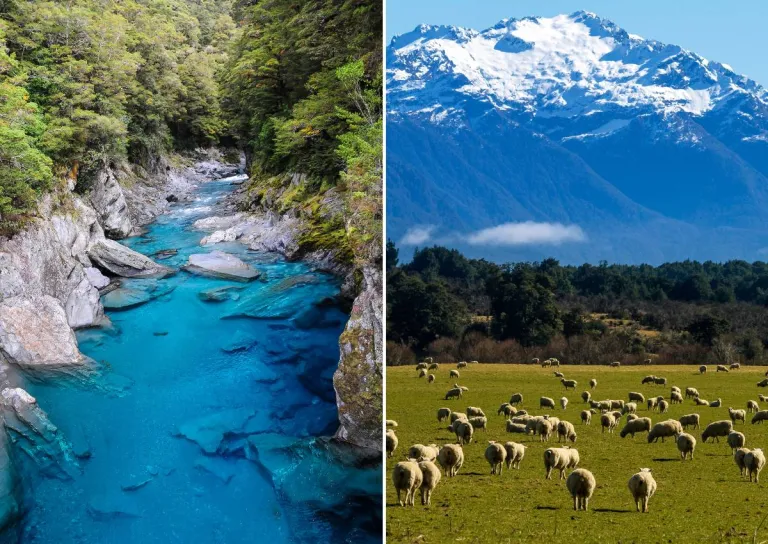Our favourite places to stay on this sleepy Cebu island.
New Zealand Visa Fee Increase Announced for October 2024

Travellers and migrants planning to visit or work in New Zealand should brace for significant changes to visa fees and immigration policies, set to take effect from 1 Oct 2024. Their government has announced a sweeping New Zealand visa fee increase and levies across almost all categories, aiming to better align these charges with the actual costs of processing applications. Despite these hikes, New Zealand remains committed to supporting its Pacific neighbours by maintaining subsidised fees for applicants from Pacific countries.
Also read: A Complete Guide to the New Zealand Working Holiday Visa 2024
What you should know about the New Zealand visa fee increase

One of the most notable changes involves student visas. For applicants from regions classified as Band C, which includes much of the world outside the Pacific and a few other specific regions, the student visa fee will rise from ₱10,339 to ₱16,715. This change accompanies a substantial increase in the immigration levy for student visas, which will jump from ₱3,274 to ₱9,133. Conversely, those applying for post-study work visas will see their fees decrease from ₱16,887 to ₱11,028. However, this comes with a significant trade-off as the immigration levy associated with these visas will skyrocket from ₱7,237 to ₱46,527.
The Accredited Employer Work Visa (AEWV), a crucial visa for temporary workers, will also undergo changes. While the AEWV fee will see a slight reduction from ₱18,611 to ₱16,543, the immigration levy for this visa will experience a steep increase from ₱7,237 to ₱36,532. The AEWV is vital for ensuring that New Zealanders are prioritised for job opportunities while still allowing employers to hire skilled migrants in cases of genuine labour shortages.
Additional requirements
In addition to fee adjustments, the New Zealand Government has introduced new requirements to the AEWV scheme. These updates include the introduction of an English language requirement for migrants applying for low-skilled roles classified under the Australian and New Zealand Standard Classification of Occupations (ANZSCO) levels 4 and 5. Furthermore, a minimum skill and work experience threshold will be implemented for most AEWV roles, ensuring that only qualified migrants fill these positions.
Employers looking to hire migrants for roles at ANZSCO levels 4 and 5 will now need to engage with Work and Income, New Zealand’s welfare agency, before being granted approval. This step is designed to ensure that local workers are given priority and that hiring migrants is genuinely necessary. Additionally, the maximum continuous stay for most roles at these levels will be reduced from five years to three years, adding further restrictions for migrant workers in lower-skilled positions.
Also read: Discovering Hidden Gems in New Zealand: Why You Need to Visit in 2024
Despite these changes, Immigration Minister Erica Stanford emphasised that New Zealand’s visa fees remain competitive compared to those in countries like Australia and the United Kingdom. The government’s goal is to maintain the country’s reputation as a welcoming destination while ensuring the immigration system is both fair and sustainable.
For travellers, students, and workers planning to head to New Zealand, these upcoming changes highlight the importance of staying informed and prepared as the country adjusts its immigration landscape.
Featured image credit: DmitryPichugin via Canva Pro
Published at
About Author
Anne Mercado
Subscribe our Newsletter
Get our weekly tips and travel news!
Recommended Articles
10 Bantayan Island Resorts, Hotels, and Rentals for Your Tropical Escape 10 Best Mountain Cafes in the Philippines for Your Peak Coffee Experience Coffee date on the mountains, anyone?
10 Best Things to Do in Los Angeles Los Angeles is more than Hollywood stars. From hikes with killer views to beaches straight out of a rom-com, here are 10 must-do LA experiences for Filipino travellers or any wanderers in general!
10-day Christmas and New Year Japan Trip: Complete Travel Itinerary Celebrate Christmas and New Year in Japan with this 10-day holiday vacation itinerary packed with Tokyo lights, Kyoto charm, and Osaka adventures.
10 Family Outing Ideas in Metro Manila Under ₱500 Looking for a weekend bonding with the family under ₱500? Head to these places, pronto!
Latest Articles
How Filipino Travellers Can Save on Noche Buena and Spend More on Travel Holiday savings for travel
Thailand Eyes to Build Disneyland Instead of Casino Complex Thailand is considering bringing Disneyland to the country, replacing a previously proposed casino and entertainment complex.
US May Require Five Years of Social Media History for Tourists Are Filipino tourists affected?
3 Days in Okinawa: Everything We Saw, Did, and Ate in Japan's Southern Gem Here's your ultimate travel guide to Okinawa, Japan!
Cheap Domestic Flights Needed as Philippines Ranks Last in Southeast Asia Tourism Tulfo says local flights are too expensive and Filipinos deserve better travel deals.

